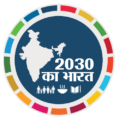In the pursuit of a sustainable future, the world has united under the banner of the Sustainable Development Goals (SDG) to address the most pressing global challenges. These goals, established by the United Nations in 2015, have set a visionary target: to create a more equitable, prosperous, and harmonious world by the year 2030. However, the realization of these goals requires not just individual efforts, but the collective power of partnerships that extend across borders, industries, and societies.
SDG 2030: A Global Commitment
The year 2030 holds great significance, not only because it represents the culmination of a decade but also because it marks the deadline for the achievement of the SDGs. These 17 interlinked goals span a wide spectrum of issues, ranging from poverty eradication and gender equality to climate action and quality education. The commitment to achieving these goals is not only a moral obligation but an imperative for the survival and prosperity of our planet.
SDG in India: A Transformative Journey
India, with its diverse cultural tapestry and vast population, plays a pivotal role in the global effort to achieve the SDGs. The country’s commitment to these goals is evident in its national agenda, known as “2030KaBharat,” which translates to “India of 2030.” This initiative underscores India’s determination to harness its potential for the greater good, aligning it with the global vision of sustainable development. Let’s delve into some key areas where partnerships are driving progress towards the SDGs in India.
1. Good Health And Well Being
One of the most crucial aspects of the SDGs is ensuring good health and well-being for all. In India, partnerships between the government, non-governmental organizations (NGOs), and the private sector have been instrumental in improving healthcare infrastructure, ensuring access to essential medicines, and raising awareness about hygiene and sanitation. Collaborative efforts have led to the successful implementation of initiatives such as the National Health Mission and Ayushman Bharat, which aim to provide healthcare services to all, particularly the underprivileged.
2. Quality Education
Education is the cornerstone of progress, and SDG 4 focuses on ensuring inclusive and quality education for all. Partnerships between the government, educational institutions, and corporate entities have resulted in innovative programs that enhance the accessibility and quality of education in India. The “Digital India” campaign and “Beti Bachao, Beti Padhao” (Save the Girl Child, Educate the Girl Child) initiative are noteworthy examples of these collaborative efforts, driving positive change and promoting gender equality through education.
3. Affordable and Clean Energy
The transition to clean and sustainable energy sources is pivotal for combating climate change, and SDG 7 emphasizes affordable and clean energy. India has made significant strides in this area, with partnerships playing a vital role. Initiatives like the National Solar Mission and collaborations with international organizations for renewable energy projects have propelled the country towards a greener and more sustainable energy future.
4. Partnerships for Progress
Partnerships are not just desirable but indispensable in achieving the SDG goals by 2030. The challenges that these goals address are multifaceted, and no single entity, be it a government or a corporation, can tackle them in isolation. Collaboration brings together diverse expertise, resources, and perspectives to create synergies that drive meaningful change.
Public-Private Partnerships (PPP): An Engine of Transformation SDG
One of the most potent forms of collaboration in India, and indeed globally, is the concept of Public-Private Partnerships (PPPs). These alliances bring together the government and the private sector to address complex challenges and harness the strengths of both sectors.
PPP in Healthcare
In the healthcare sector, PPPs have led to the establishment of state-of-the-art hospitals, clinics, and healthcare delivery systems. By blending the efficiency of the private sector with the public sector’s commitment to universal healthcare, PPPs have transformed the landscape of healthcare access in India.
PPP in Education
Education has witnessed a similar transformation through PPPs. Corporate entities have adopted schools, introduced innovative teaching methods, and provided scholarships to underprivileged students, significantly improving the education ecosystem. These partnerships create a win-win situation, enhancing educational outcomes while fulfilling corporate social responsibility objectives.
PPP in Clean Energy
The clean energy sector has also benefited from PPPs, attracting investment and technological expertise to boost the development of renewable energy sources. This collaborative approach is instrumental in India’s journey towards a sustainable energy future.
NGOs: A Force for Change
Non-governmental organizations (NGOs) are another critical player in achieving the SDG goals. These organizations bridge the gap between governments, the private sector, and marginalized communities. They advocate for the underprivileged, channel resources to where they are needed most, and mobilize public support for critical causes.
Local and International Collaborations
Partnerships for progress are not confined within borders. India has been actively collaborating with international organizations, governments, and NGOs to share best practices, gain access to global expertise, and leverage resources. The partnership with the United Nations, for instance, has opened avenues for technical assistance and knowledge sharing in various SDG-related projects.
The Road Ahead
As we march towards the year 2030, the journey to achieve the Sustainable Development Goals is both inspiring and challenging. The progress made so far highlights the power of partnerships and collective action in addressing complex global issues. It is imperative that we continue to strengthen and expand these collaborations, bringing more stakeholders into the fold.
In conclusion, the path to achieving the SDG goals by 2030 is paved with partnerships. India, with its unwavering commitment and innovative collaborations, is a shining example of how collective efforts can drive progress towards a more sustainable, equitable, and prosperous world. The clock is ticking, but with our shared dedication and coordinated actions, we can turn the vision of the SDGs into a reality by 2030.

